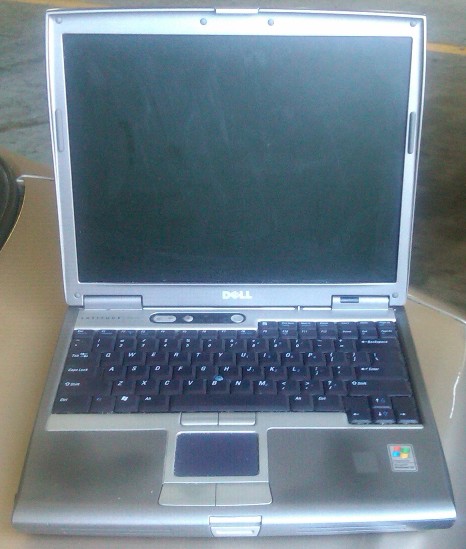First, you need to power down your computer. In Windows, click the Start button, go to shut down options, and choose Shut Down. Once the laptop has completely powered off, close the screen and turn the laptop over. If it is plugged into an external power source, unplug it now.
The battery should also be removed so that absolutely no power is flowing through the computer. If you're looking at your keyboard, the battery would be located under the bottom right corner. To remove it, take out the one Phillips head screw -- don't lose it -- and then push in the tab on the side. The battery should come out once the tab is pushed in. Set the battery to the side.
The RAM compartment on a Dell D610 is located more or less in the center of the laptop, and it has a cover that is held down by one screw. (The RAM cover may have a message printed on it about patents.) Remove the screw with your small Phillips head screwdriver and put it somewhere safe. The cover will come right off and now you should be looking at your RAM stick.
Before touching the RAM, ground yourself either by using an ESD wrist strap or by touching something metal that is grounded. A small static discharge can easily damage the RAM and other components, and you may not even feel it.
The D610 only has one RAM slot. There is a tab on either side of the chip; to remove it, push both tabs outward (away from the RAM) and the chip should pop up at an angle. Grasp it by the corners and gently but firmly slide it out of the slot. Even if you are replacing the RAM, it is a good idea to store the old RAM somewhere safe, preferably in an anti-static bag, in case it is needed later.
To install the new RAM, slide it in at a 45 degree angle until it is firmly in place. Slowly push it down until it is horizontal, and the tabs should snap into place and lock it in. Reattach the cover and the battery and then boot up the computer. Go into system properties (right click My Computer or Computer and select Properties) and make sure that the system recognizes the new RAM.
If the amount of RAM shown isn't right -- or if the computer doesn't boot up at all -- the RAM stick is probably not seated correctly. Follow the same procedure to remove the RAM and try installing it again, making sure that it locks firmly in place.
(Originally published on Helium.com, May 2010)

No comments:
Post a Comment